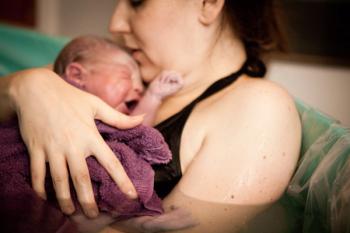
PGT-A may shorten time to pregnancy in women aged over 35 years
A new study suggests preimplantation genetic testing for aneuploidy can increase live birth rates in women aged 35 to 42 years.
Researchers from King’s College London have found that genetic testing of embryos created from in vitro fertilization (IVF) may decrease the duration needed for women aged over 35 years to have a baby, publishing their data in the Journal of Clinical Medicine on August 25, 2025.1
The data focused on women aged 35 to 42 years, as this age group more often produces embryos with chromosomal abnormalities. While preimplantation genetic testing for aneuploidy (PGT-A) is not currently recommended for routine use, the results indicated it may lead to pregnancy in fewer transfers, reducing the time to conception.1
“Our findings suggest that targeted use of PGT-A in this age group could help more women have a baby sooner, while also reducing the emotional toll of repeated unsuccessful cycles,” said Yusuf Beebeejaun, PhD, first author of the paper at King’s College London.1
Randomization and embryo transfer procedures
There were 100 patients included in the pilot study, 50 of whom received PGT-A and 50 were in the control group. All study procedures were performed at King’s Fertility, with ovarian stimulation accomplished through either a gonadotropin-releasing hormone agonist downregulation or antagonist protocol.2
Investigators triggered final oocyte maturation when 2 or more follicles reached more than 18 mm, retrieving oocytes 34 to 36 hours later. Patients were randomly assigned to the PGT-A or control group on day 3 after egg collection.2
In the control group, patients continued luteal support and received a fresh blastocyst transfer. Those in the PGT-A group discontinued luteal support and received trophectoderm biopsy for all blastocysts. The clinical pregnancy rate (CPR), live birth rate (LBR), and clinical miscarriage rate (CMR) were reported as primary outcomes.2
Improved outcomes with PGT-A
Similar baseline characteristics were reported between groups. The results indicated an increased cumulative LBR following up to 3 embryo transfers in the PGT-A group vs the control group, with rates of 72% vs 52%, respectively.1
A CPR of 50% was reported in the PGT-A group vs 40% in the control group, indicating an adjusted OR of 1.31.2 For CMR, the adjusted OR was 1.20, with rates of 12% and 8%, respectively. Initial LBRs were 50% and 38%, respectively.
Investigators noted that patients ineligible to meet the trial’s randomization criteria were aged a mean of 39 years and had a mean anti-müllerian hormone (AMH) value of 8.2 pmol/L. In comparison, the study population was aged a mean of 37 years and had a mean AMH value of 17.2.2
Common reasons for being ineligible included no available embryos in 15.7%, only one transferable good quality embryo in 7.89%, and only 2 in 42.1%. These individuals had a significantly reduced CPR of 15.7% and LBR of 7.89%.2
PGT-A’s role in addressing age-related chromosomal issues
Historically, older women more often produce embryos with the wrong number of chromosomes, increasing miscarriage risk and making it more difficult to conceive.1 However, PGT-A allows embryos to be assessed for chromosomal abnormalities before transfer.
The trial also included mosaic embryos, which contain both normal and abnormal cells. These embryos are not often included in research despite frequently presenting in IVF. While the small sample size prevented the difference in cumulative live birth from reaching statistical significance, investigators recommended further research in a larger, multicenter trial.1
“Specific focus needs to be placed on including patients over the age of 39, and lowering the threshold for high-quality embryos from 3 to 2 will increase eligibility and participation rates among this population,” wrote investigators.2
References
- King’s College London. Genetic testing of IVF embryos helps women over 35 conceive faster. News release. EurkAlert. August 25, 2025. Accessed August 27, 2025. https://www.eurekalert.org/news-releases/1095509
- Beebeejaun Y, Bakalova D, Mania A, et al. Preimplantation genetic testing for aneuploidy versus morphological selection in women aged 35-42: results of a pilot randomized controlled trial. J Clin Med. 2025;14(14):5166. doi:10.3390/jcm14145166
Newsletter
Get the latest clinical updates, case studies, and expert commentary in obstetric and gynecologic care. Sign up now to stay informed.











